The representation of LGBTQ characters in young adult (YA) fiction has grown exponentially over the past two decades as our community has fought to ascend from the proverbial shadows and slowly advanced socially, culturally and politically in the quest for equality—in America and globally. Openly LGBTQ characters in YA novels once remained virtually nonexistent but only hinted at: Us “millennial cusps” remember quite a few “tomboy” characters who piqued our budding curiosity/gaydar, and we now know that a few authors of YA books we cherished lived queer lives (Ann M. Martin of “The Babysitters’ Club” fame coming immediately to mind).
Today, however, young queer readers can finally find characters in their favorite books with whom they can identify and draw inspiration from to find their individual voices and identities growing up gay. The authors of these books can only be heavily influenced by their own experiences growing up LGBTQ, weaving their own biographies—emotional or otherwise—into their characters and stories. If we view YA novels as echoes of their authors’ lives, then for the younger (and marginalized) LGBTQ audience, these novelists’ experiences mirrored through their work serve as invaluable touchstones that provide much-needed voices of reason, sympathy and identification to relate to on the page.
Most of us have heard of characters like Emily from the “Pretty Little Liars” blockbuster franchise, but GO decided to round up some more community-oriented LGBTQ YA books created by (mostly) queer authors to survey the ever-growing market for these stories. Whether you enjoy indulging in young adult novels yourself (hey, the “Twilight” and “Hunger Games” phenomena didn’t arise without a HUGE boost from adult fans!); know some queer youth who could use some guidance and representation outside the ‘tube or silver screen; or just want to revel in the knowledge that a few of your fave authors from when you were a kid liked ladies, too, GO’s got you covered.

Photo by Razor / Shutterstock.com
AUTHORS
Ann M. Martin—”The Babysitters’ Club”
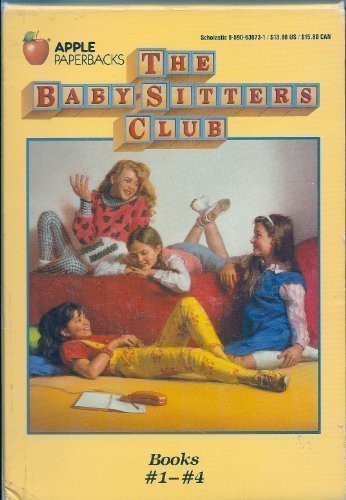
Book covers courtesy Amazon.com
Ann M. Martin may not be well-recognized today by name alone, but many 30-something LGBTQ readers grew up reading her book series, “The Babysitter’s Club.” The queer author only recently came out in a Vulture profile in Sep 2016—which may have sent some in the lesbian community to scramble for their old paperbacks of the BSC series to read between the lines and find some hints as to the author’s sexual identity. (“Sporty” tomboy and BSC founder Kristy, anyone?)
This new rereading of the series may even reintroduce the books as LGBQ YA, where a tomboy femme forms her own female-led and -driven enterprise that’s outside the influence of the patriarchy and succeeds in the interpersonal support system among women. Wherever this new bit of biographical information about the writer of one of the most popular YA book series ever produced leads, it’s a strong indicator that YA fiction has always had its LGBTQ icons—we just didn’t always realize it.
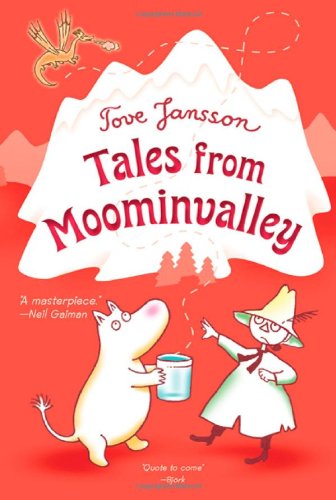
As a prolific illustrator and writer, Tove Jansson lived a so-called “bohemian lifestyle” with her partner Tuulikki Pietilä in the mid-to-late 20th century in Finland, and the duo was among Finland’s most visible gay couples. Jansson is best known for her popular Moominchildren’s book series, which follow the adventures of trolls known as Moomins who live in Moominvalley. LGBTQ representations are prominent throughout the books, and the storylines written into them heavily reflected Jansson’s own anxieties and social struggles attached to her lesbianism in an unaccepting era.
In the third book of the series, two new characters appeared, representing Jansson and a married woman with whom she had a passionate affair. As same-sex relationships were illegal in Finland at the time and had to be carried out covertly, these two Moonkins carried a suitcase around everywhere they went, inside of which was a ruby that symbolized their love for each other. Eventually, they open the suitcase and show everyone in Moominvalley the love/ruby, representing that they no longer have to hide it from the world.
While a prolific artist in many mediums, today Jansson is best remembered as the creator of the gentle Moomins and their ability to conjure myriad associations and represent so many things to so many readers. Her work focused on inclusion, love, and courage; and it is her personal courage during the days of repressed sexual orientation throughout society that has made her an LGBTQ icon.
Margaret Wise Brown—”Goodnight Moon”
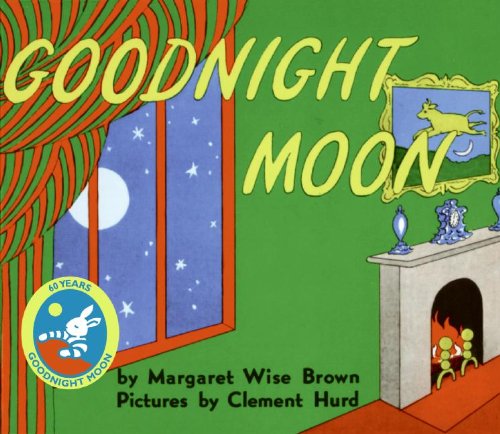
Bisexuality was almost as taboo as outright gayness in the 20th century; more so if you carried on alternating affairs throughout your life. It’s attached stigma could ruin one’s social and professional lives. But this didn’t stop Margaret Wise Brown, author of numerous children’s books and series, including the perennial classic “Goodnight Moon.” While working as an editor at W.R. Scott, Brown reached out to her hero, Gertrude Stein, with a proposal to work on a children’s book: Stein agreed and together they produced “The World Is Round,” often cited as the first modern board book for babies.
While having had affairs with men, Brown also engaged in a 10-year-long relationship with poet and actress Blanche Oelrichs. Cohabiting together in Manhattan starting in 1943, Brown stayed with Oelrichs until her death in 1950. Afterward, she was briefly engaged to a Rockefeller, but died from an embolism in Europe in 1952 during a book tour. At the time of her death, she had published over 100 books and influenced the future of children’s books for decades to come.
YA NOVELS YOU (OR YOUR TEEN) SHOULD KNOW
“Beyond the Screen Door” by Julia Diana Robertson

A tale that weaves magical realism with social realism, “Beyond the Green Door” details the story of Nora Lee Sutter and her best friend, Joanne, starting in 1945. Nora can see spirits and receives premonitions throughout her life, which she chooses to ignore or follow, to tragic consequences. Meanwhile, Joanne is more comfortable working in her father’s auto shop, which concerns her mother but doesn’t bother her father one bit. As the two women grow up, romantic feelings begin to stir between the two, and as Joanne begins to follow her own queerness and begins to dress like a man and become a mechanic, Nora is still haunted by spirits that makes her doubt her own self.
Written as both a coming-of-age story and a supernatural tale, Julia Diana Robertson’s alternating narration brings you into the characters’ thoughts and perceptions, and while at times the book is an intense read, it’s a satisfying look at how throughout history, the ability to be one’s true self has always been the bravest choice to make.
“Sugar Rush” by Julie Burchill
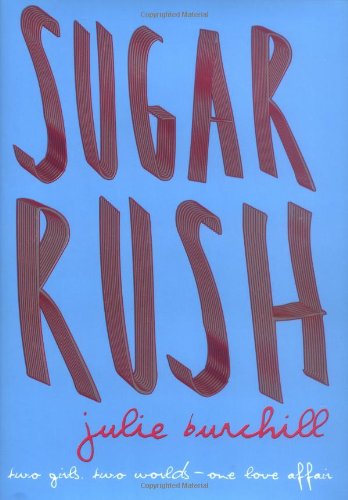
For a frank, and in some circles, controversial, look at teenage lesbian romance, “Sugar Rush” is a strong choice. After having to leave her exclusive English high school and transferring to the local public school, Ravendene, protagonist Kim Lewis befriends the most popular girl in this tough school, Maria “Sugar” Sweet. Diving headlong into a life of partying and shedding her good-girl image, she and ”Sugar” begin a passionate affair. But heartbreak seems to be in the cards for Kim as bad girl Sugar isn’t as sweet as she sounds.
Adapted into a 10-episode series in England, “Sugar Rush” is the kind of YA fiction that parents generally hate and its audiences love, filled with suggestions of sex and plenty of drugs and alcohol to give kids a rush. The author, Julie Burchill, has been a long-time writer and “Sugar Rush” was her first foray into YA novels. Openly bisexual, her own colorful biography reads like a YA fantasy of a woman who grows up to do exactly what she wants, consequences be damned. For the fiery YA fan looking for a spicier take on teenage LGBTQ characters, “Sugar Rush” may just hit the spot.
“Letters in the Attic” by Bonnie Shimko

Living in hard-knock circumstances, Lizzy and her mother are left by her worthless father and move to upstate New York to live with her grandmother. Lizzy discovers a cache of old letters in the attic that suggest who she thought was her father really isn’t, and while adjusting to her new life, Lizzy begins to go through puberty and starts experiencing a range of emotions and feelings that are new to her. While having to go through the regular gauntlet of puberty, such as buying a bra and contending with her first period, Lizzy is also starting to have feelings for a girl that lives up the road.
Taking place in the 1960s, “Letters in the Attic” is a warm-hearted debut novel from Bonnie Shimko, a retired school teacher, and addresses the confusing feelings that come with adolescence and other changes in life, as the perception of young women begin to widen to the world around them and strong feelings of love and desire of an adult nature begin to grow. A sensitive portrait of a young woman who thinks she may be in love, this YA novel is a good starting point for an LGBTQ reader to begin sorting out feelings that come as a surprise to many in their young lives.
“The Miseducation of Cameron Post” by emily m.danforth
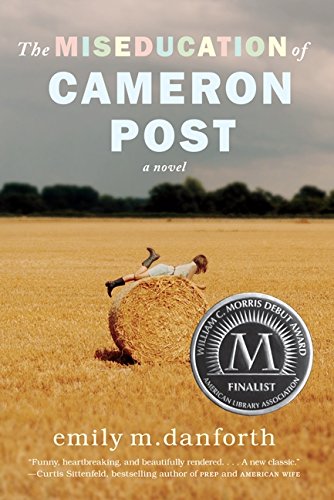
To turn a literary phrase, a good LGBTQ YA coming-of-age novel is hard to find, but emily m. danforth’s “The Miseducation of Cameron Post” is certainly one to recommend to young individuals looking for a LGBTQ novel. Set in rural Montana in the early 1990s, the novel’s protagonist, 12-year-old Cameron Post, is sent to live with her conservative grandmother and aunt. Feeling both a mixture of sadness and relief that her parents will never find out that she’s gay, she finds a new conundrum unfold as she falls in love with a girl and is outed to her relatives. Her aunt sends her to a religious so-called “gay conversion camp,” forcing young Cameron to find strength in her identity in the face of forceful anti-LGBTQ opposition.
Danforth, who was born and raised in Montana, came out while a student at Hofstra University. Her debut novel reads like an emotional biography and was influenced by the wave of “conversion” camps and programs that religious and conservative families began to force their LGBTQ sons and daughters to attend. This book is a recommend for any friends who may be struggling with their children’s identities or for younger readers that haven’t found many LGBTQ protagonists to identify with in YA fiction. Out filmmaker Desiree Akahavan is currently adapting the novel into a film starring Chloe Grace Moretz.

Told from the perspective of her younger sister, Luna is the story of a transgender teenager who lives a double life: during the day as Liam, a high school senior, and at night as Luna, stating that her true identity can be seen at night. As Luna’s confidant, Regan struggles to keep her secret from her family and her new boyfriend. When Luna decides that she is going to transition full-time and go public with her gender identity, Regan must make a choice and stand up for what she thinks is right, no matter the consequences.
A sensitive and approachable YA novel on the subject of trans identity, Peters’ story is one of standing by your convictions and supporting the ones you love. Luna was also the first YA novel with a transgender character to be published by a mainstream publisher. Julie Ann Peters is well-known for her LGBTQ work, including the highly regarded “Keeping You a Secret” and the harrowing “Rage: A Love Story.”
“The Difference Between You and Me” by Madeleine George

Opposites attract in Madeleine George’s winning YA novel about two girls with very little in common except their attraction to one another. While 15-year-old Jesse is the lone radical at her high school who cuts her hair with a knife and wears green fisherman boots to school, Student Council VP Emily is the picture-perfect model student. But they’re connected to each other and sneak away for secret rendezvous. As political tensions in their community begin to mount, they again find themselves on the opposing sides that threaten to tear their burgeoning relationship apart.
A funny and witty novel that alternates between the two girls’ perspectives, providing the reader with a deep understanding of each character’s positions, Madeleine George’s “The Difference Between You and Me” is a fresh look at how those who identify as LGBTQ—indeed, anyone who shares an identity in a marginalized group—come from all different walks of life, but can find some commonality in their shared experiences. George—a Pulitzer Prize for Drama nominee for her work “The (Curious Case of the) Watson Intelligence“—is married to actress and Tony-winning playwright Lisa Kron (“Fun Home” musical). She has previously published the also-recommended YA novel “Looks,” which deals with body image issues and high school social dynamics over which two teenage girls unite to defy.
“Geography Club” by Brent Hardinger

Russel Middlebrook thinks he’s the only gay person in his high school, but when a chatroom friendship turned real-life meetup reveals that a popular athlete at his school is also gay, Russel finds the courage to tell his best friend, who in turn reveals that she is bisexual and has a girlfriend. Suggesting they start a club for LGBTQ members of the high school, they code it as Geography Club to keep it secret. As friendships are made and broken, Russel and the members of the club push for official recognition by the school administration.
An emotionally honest novel that confronts the often difficult terrain of high school that LGBTQ students must navigate, Hardinger’s novel works as a plea that the social stigma adolescent LGBTQ individuals face be examined with common sense and empathy, while also serving as a rallying cry for students to band together for support. Hardinger has written 11 novels, all featuring gay teenagers as protagonists, and this novel—his first book—has been frequently opposed by school districts for inclusion in their libraries and was also adapted into a feature film. Living in Seattle with his husband, Hardinger was a co-founder of Oasis, one of the first organizations founded to support gay teens.

What Do You Think?